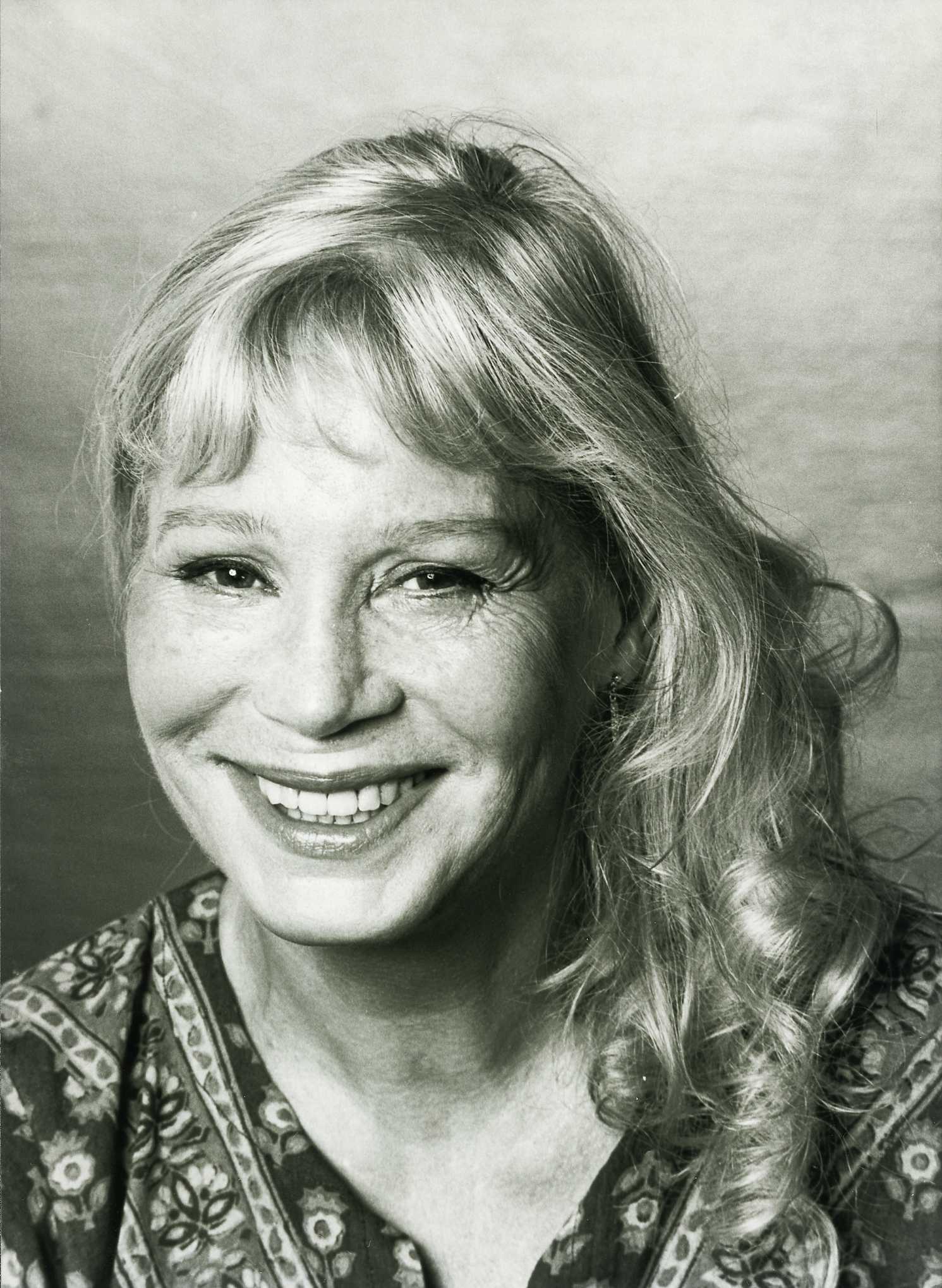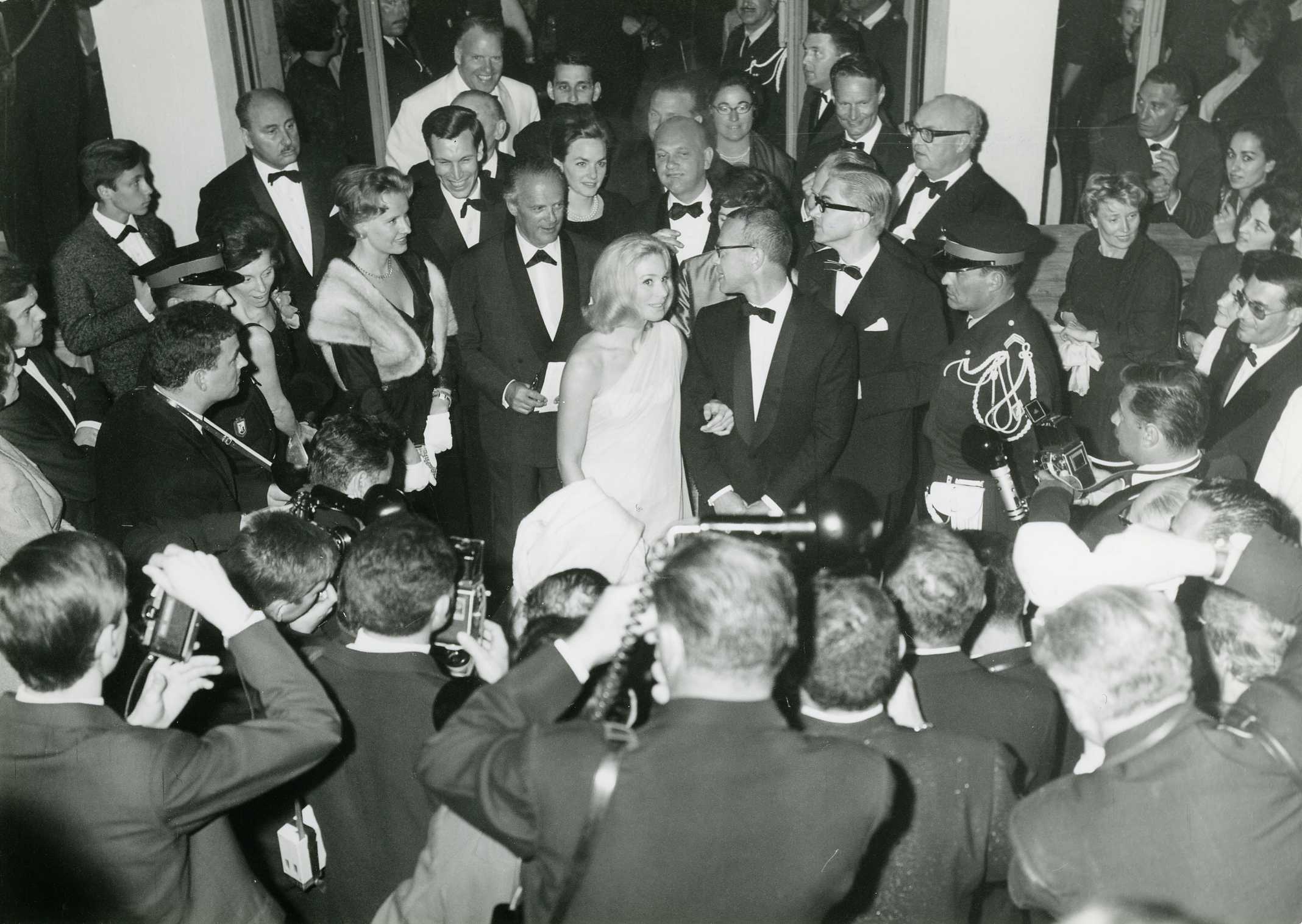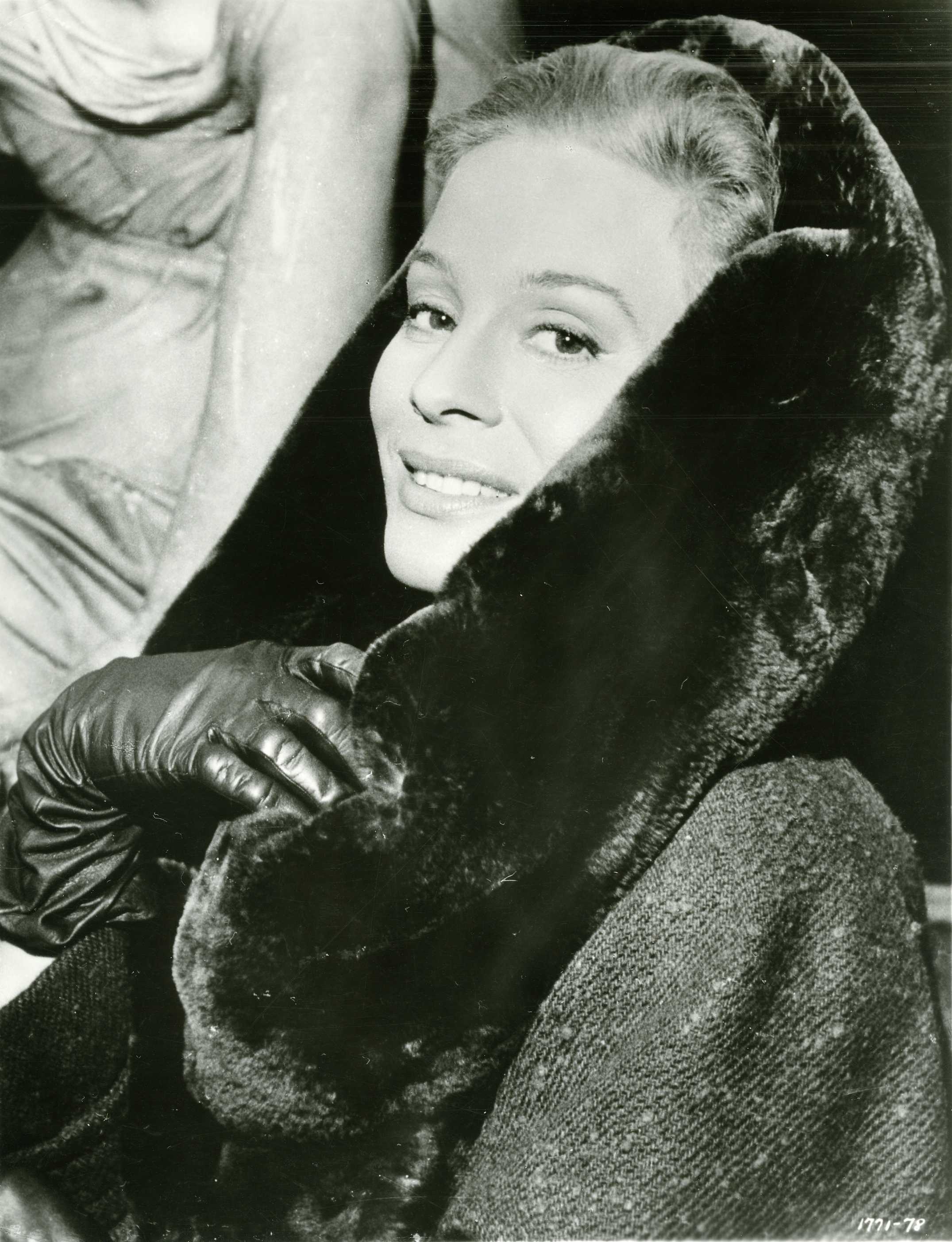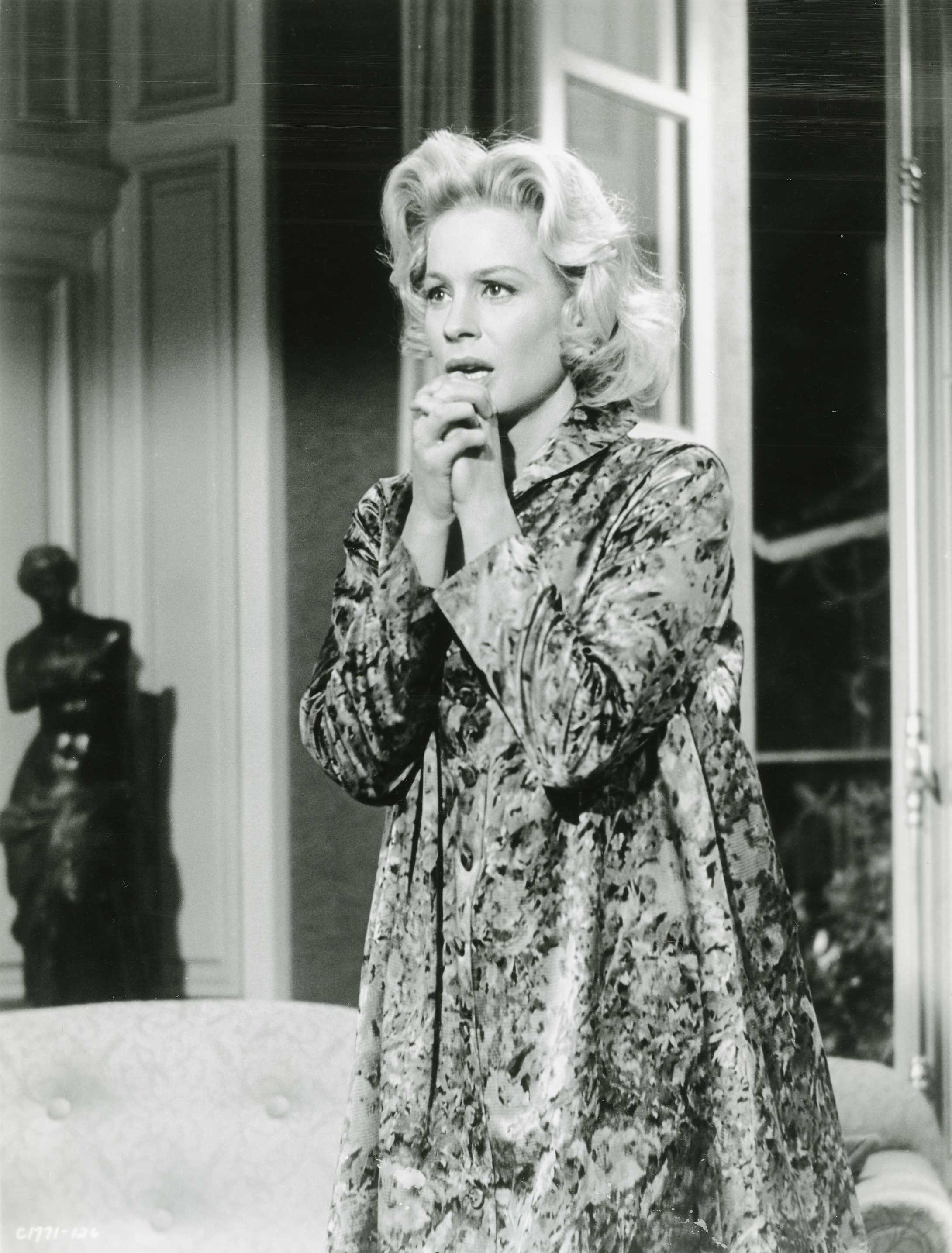It’s not easy to write about Ingrid Thulin. Even though we knew each other. Even though she was in a couple of the films I produced. There was always a kind of noli me tangere (touch me not) about her. She followed her own path, usually alone. I think she probably only felt truly at home in the forests of northern Sweden, where she came from. Or at the heart of the bustling Italian community, where one is allowed to be alone, together.
No one could be more open than she was, no one was harder to get close to. Few have been as beautiful as she, few able to make themselves more ugly. No one could appear so uncomplicated, no one more complicated. Few have had such a strong erotic radiance, and few were able to play a frustrated woman like she could. No one could be more naturally present, no one more intellectually deprecatory.
But one thing is certain. She must have been a wonderful instrument for the director who knew how to play her. All the tones and nuances were there for those who knew how to bring them out.
And not surprisingly, Ingmar Bergman was the one who had the best understanding of this. In Images: My Life in Film, he writes: “Ingrid Thulin is one of the truly great film actresses of our time. As an envious colleague once put it: She’s married to the camera.”
Personally, she didn’t seem to care. There’s something peculiarly half-hearted about her, both as a person and as an actress. She never seemed to take life or her work seriously. This was evident in the rehearsals, for example. Ingrid was rarely that good in a rehearsal, she didn’t feel like giving it her best effort. But when the director shouted “Action!”, that was it. She nailed it perfectly on the first take.
Ingrid Thulin was born in Sollefteå in 1929. At 17 she came to Stockholm, started at business school, took dance lessons. She was discovered by Johan Falck, who took her to Norrköping City Theatre for a few years, and after that she was admitted to the Royal Dramatic Theatre’s acting school in 1948. She was noticed in Anouilh’s Invitation to the Castle in 1951. She was given over a dozen film roles in tandem with this. An attractive eyecatcher, certainly, but barely any reviews. And she personally didn’t seem to care. Her three movies before Wild Strawberries/Smultronstället were Två sköna juveler, Danssalongen and Hoppsan, 1954–55.
So what did Bergman see in Thulin? Perhaps that she married the hyper-intellectual film critic Harry Schein in 1956, who for his part perhaps thought, if Arthur Miller can do it, why can’t I? Miller had just got married to Marilyn Monroe. In Wild Strawberries (1957), however, Bergman was satisfied to give Ingrid a role where she just had to be beautiful and serious. And she was, but there was a soul in that face too. And Bergman could see that.
In the women’s collective in the Palme d’Or-winning Brink of Life/Nära livet, 1958, Ingrid was asked to play the frustrated intellectual woman, and in The Magician/Ansiktet in the same year she played the mesmeriser’s wife, disguised as a man. Mysterious, with magnetic radiance. This all garnered international interest in this new, classically beautiful actress.
Minnelli’s The Four Horsemen of the Apocalypse in 1962, however, was a typical Hollywood production that did not do her justice – and she never went back to Hollywood. Bolognini’s dramatization of Moravia’s Agostini suited her better, both physically and artistically, and she would soon settle in Italy for good. Before this, however, Bergman had time to give her two of what were by far her most prominent roles: the ugly teacher with severe eczema who is secretly in love with the priest in Winter Light/Nattvardsgästerna, and the sexually repressed sister in The Silence/Tystnaden, both from 1963 – two roles as far removed from glamour as it’s possible to get. Ingrid played them with rare presence. She seemed to know more about loneliness than anyone else.
Alain Resnais’s The War is Over/La Guerre est Finie from 1966, with Yves Montand in the male lead, consolidated her international status, although Mai Zetterling gave her a role she could really get her teeth into, as the neurotically depraved mother in Night Games/Nattlek in the same year. And Yngve Gamlin surprised with Badarna in 1968 when he went back to her roots giving her a role as the exuberant, northern Swedish cook at an alcohol treatment centre – a role in which Ingrid felt unexpectedly at home.
Bergman also continued to give her easy, rewarding roles in Hour of the Wolf/Vargtimmen in 1968, The Rite/Riten in 1969 and Cries and Whispers in 1972, but by now Ingrid had definitely decided to settle in Italy. In 1970 she bought a large country estate in Sacrofano, on the outskirts of Rome. It was picturesquely rustic and not particularly well taken care of, but friends were always welcome and everyone felt at home. The move brought with it over a dozen Italian films, the most memorable being Visconti’s The Damned/La caduta degli dei (Götterdämmerung), 1969 and Tinto Brass Salon Kitty, 1975.
In 1978 Erland Josephson suggested that she, alongside him and Sven Nykvist, should co-direct Erland’s screenplay One and One/En och en, a beautifully nostalgic film about two lonely people who try to find each other in companionship. It was received with respect but little enthusiasm in Sweden, but became an unexpected international success and prompted Ingrid’s desire to direct. She had directed her first film, the short The Dedication/Hängivelsen in 1965, but her feature-length debut came with Broken Sky/Brusten himmel in 1982. This is a semi-autobiographical depiction of a young girl in the northern Swedish province of Norrbotten, who grows up with an alcoholic father – a nice, sensitive film in parts, but deficient as a whole.
I believe this had to do with the fact that Ingrid Thulin found it so much easier to give than take. As a director, one should not be too generous. One must always make demands. Ingrid rarely made demands, either of herself or of others. She took life and her roles – those in reality and those in her films – very much as they came. Generously she gave of herself, while successfully remaining independent and living her own life.
Her memoir was published in 1992. Memoir? Certainly a memoir, but typical of Ingrid. Fragmentary recollections, from then and now. Labscouse from northern Sweden mixed with Italian spaghetti. Highly aromatic, but hard to pin down. Don’t ask for the recipe. Life as poetry. Poetry as life. Her distance marriage to Harry Schein is only mentioned in passing, but was not dissolved until 1989. In practice they mainly saw each other at festivals and other public situations during the last 20 years. I’m not sure that was typical for Harry, but it certainly was for Ingrid. This loyal being who always kept her distance.
Bengt Forslund (2018)
(translated by Matt Bibby)
Basic info
Main profession: Director
Born: 1926
Died: 2004
Active: 1948-1984
Filmography
Regi:
Brusten himmel (1982)
En och en (1978)
Hängivelsen (1965)
Manus:
Brusten himmel (1982)
Roll:
Citizen Schein (2017)
Efter repetitionen (1984)
En och en (1978)
Oscarsteatern 70 år (1976)
På andra sidan bron (1976)
Monismanien 1995 (1975)
Moses (1975)
Salong Kitty (1975)
En handfull kärlek (1974)
Viskningar och rop (1973)
N.P. en hemlighet (1971)
De fördömda (1969)
Riten (1969)
Badarna (1968)
Vargtimmen (1968)
Sandrews journal 1967 (1967)
Kriget är slut (1966)
Nattlek (1966)
Testfilm Nattlek (1966)
Dansen kring Guldbaggen (1964)
Der Film der niemand sieht (1964)
Die Lady (1964)
Oidentifierad Ingrid Thulin introducerar på franska (1964)
Ett drömspel (1963)
Nattvardsgästerna (1963)
Sextett (1963)
Tystnaden (1963)
Domaren (1960)
De fyra ryttarna (1960)
Ansiktet (1958)
Nära livet (1958)
Aldrig i livet (1957)
Smultronstället (1957)
Den dödes skugga (1956)
Pettersson i Annorlunda (1956)
Danssalongen (1955)
Hoppsan! (1955)
I rök och dans (1954)
Två sköna juveler (1954)
En skärgårdsnatt (1953)
Göingehövdingen (1953)
Kalle Karlsson från Jularbo (1952)
Möte med livet (1952)
Leva på “Hoppet” (1951)
Hjärter Knekt (1950)
När kärleken kom till byn (1950)
Havets son (1949)
Kärleken segrar (1949)
Vi bygger framtiden (1949)
Dit vindarna bär (1948)
Känn dej som hemma (1948)
Awards
Ingrid Thulin har erhållit en stor mängd priser för sina roller som t.ex. FIB:s filmpris 1958 för bästa kvinnliga biroll i Smultronstället, delat skådespelarpris (med Bibi Andersson, Eva Dahlbeck och Barbro Hiort af Ornäs) i Cannes 1958 för Nära livet, den första Guldbaggen 1964 för bästa kvinnliga roll för Tystnaden samt brittiska filmkritikerförbundets pris som bästa skådespelare och franska akademins Étoile de Cristal för samma roll.
Ingrid Thulin has received a great many awards for her roles, including the FIB Film Award in 1958 for Best Female in a Supporting Role in Wild Strawberries, the Best Actress Award (shared with Bibi Andersson, Eva Dahlbeck and Barbro Hiort af Ornäs) in Cannes 1958 for Brink of Life, the first Guldbagge for Best Actress in 1964 for The Silence, and the French Academy’s Étoile de Cristal for the same role.



